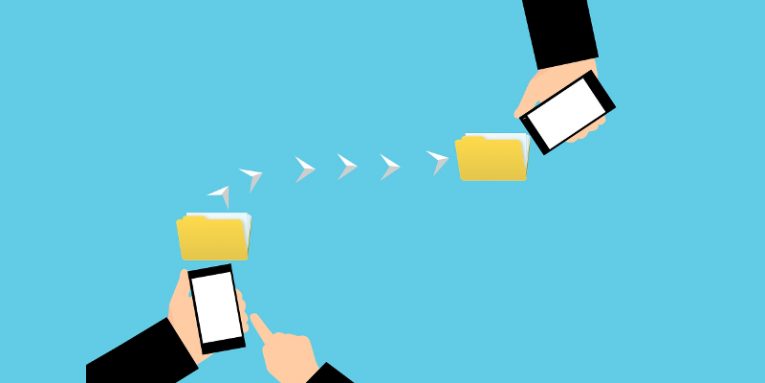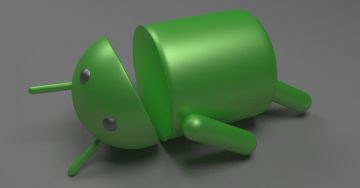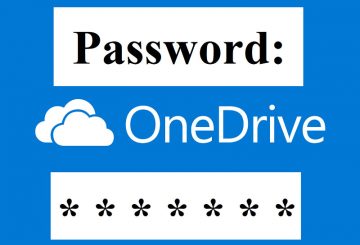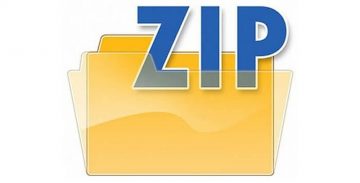How to Share Large Files Between Android Phones

the 21st century, and moving data around is easier than ever. Or is it? Every now and again, we find ourselves in situations where we need to perform a seemingly simple task that ends up turning into a massive hassle. This can certainly happen if you have two Android devices, and you want to transfer some large files between them.
The task is certainly not impossible. In fact, there are quite a few ways of doing it, but you need to consider a few things if you want to avoid losing time or dealing with annoying errors. Let's check out the options.
Table of Contents
Email attachments – the old school way
Chances are, you probably have more than one email address. You may have a business and a personal account, and you likely keep at least one more for creating online profiles that you don't care about too much.
Emails, as we all know, can also come with attachments, and if you need to transfer data between devices, you can simply attach it to an email, send it from one of your emails to another, and access the recipient account from the second phone.
You need to bear in mind, however, that most email providers have restrictions on the number and size of the files you can attach to your messages. You must make sure that the file you want to transfer fits the restrictions, and if it doesn't, you'll have to pick another option.
A PC as an intermediary – it’s time to break out the cables
That's another option for the traditionalists among you. In the olden days, files were uploaded to and downloaded from mobile device primarily with the use of a computer and a data transfer cable. Although things have moved leaps and bounds since then, the box your phone came in probably has a USB cable that can connect it to your PC, which means that you can download the file from your phone to your computer, and you can then upload it to the second device.
Transfer speeds could depend on a number of things, and some device manufacturers insist on using unintuitive and often resource-hungry software for the transfer of the files from the mobile to the desktop device. Apart from that, using your PC is a viable method, provided, of course, you have one nearby, and you don't mind getting tangled up in all the wires.
Bluetooth – let’s hope the connection isn’t interrupted halfway through
When it first came out, Bluetooth looked like the stuff of witchcraft. Nowadays, we use it constantly. The technology has endless applications, but one of the main ones is transferring data.
Sending a file from one device to another over a Bluetooth connection is fairly straightforward. You need to bear in mind, however, that the two phones must be within range. If the file is quite large, you need to be patient as well. The transfer speeds on newer devices are certainly higher, but larger files are always going to take their time. You can use that time to keep your fingers crossed and hope that the connection doesn't drop halfway through the transfer. Unfortunately, this does happen every now and again.
Wi-Fi Direct – good if your devices are in close proximity
Wi-Fi Direct is a standard for peer-to-peer communication between two devices. In effect, it's similar to Bluetooth, but the task of setting it up is easier, and the communication between multiple devices can be done at Wi-Fi speeds.
With Wi-Fi Direct, the two phones don't need to connect to a router or another access point, but they need to be close to each other in order to establish a successful connection. Although generally speaking, the technology is considered reliable, connection drops are not impossible, which is something you should probably bear in mind.
The good news for Android users is that Wi-Fi Direct is supported on all devices regardless of the manufacturer. The only scenario in which you won't have it is if your devices run Android 4 or older, though if your operating system is that ancient, you have more serious problems to worry about.
NFC – a quick setup and a slow transfer
Near Field Communication (NFC) isn't exactly ubiquitous, but the technology is becoming more and more common, and it looks like a perfect fit for things like contactless payment. This is the case because unlike with Bluetooth, the pairing of two NFC-enabled devices is as good as instantaneous. At the same time, the proximity required for the connection to be established provides greater security.
NFC can also be used to transfer files from one device to another, but the speeds are far too low, and the technology isn't really best-suited for the sharing of large volumes of data. In addition to all this, the two devices need to be no more than a few inches apart, which could be a problem under certain circumstances.
Cloud storage services – very few things could go wrong
Proximity isn't an issue with the last method on today's list. The main purpose of cloud storage services like Cyclonis Backup is to provide users with a reliable and secure way of backing up their valuable data and then restoring it. The way they work, however, makes them suitable for transferring information between devices as well.
Cloud storage services back up copies of your files and store them (usually in encrypted format) in the cloud. They then allow you to access your data at any time from anywhere in the world, and because most such services let you restore data through a browser, compatibility is rarely a problem. The only thing you should take care of is the protection of your account with a strong password. That way, you'll ensure that your data can't be accessed by anyone else.
Conclusion
We'd prefer not to single out any of the solutions as "the best one." Ultimately, you need to decide for yourself which path you'd like to take, and you need to take into consideration the specific scenario you're in (e.g., the location of the two phones, the availability of things like a working computer and an internet connection, etc.). Based on all this, you will be able to pick the method that suits your needs the best.








